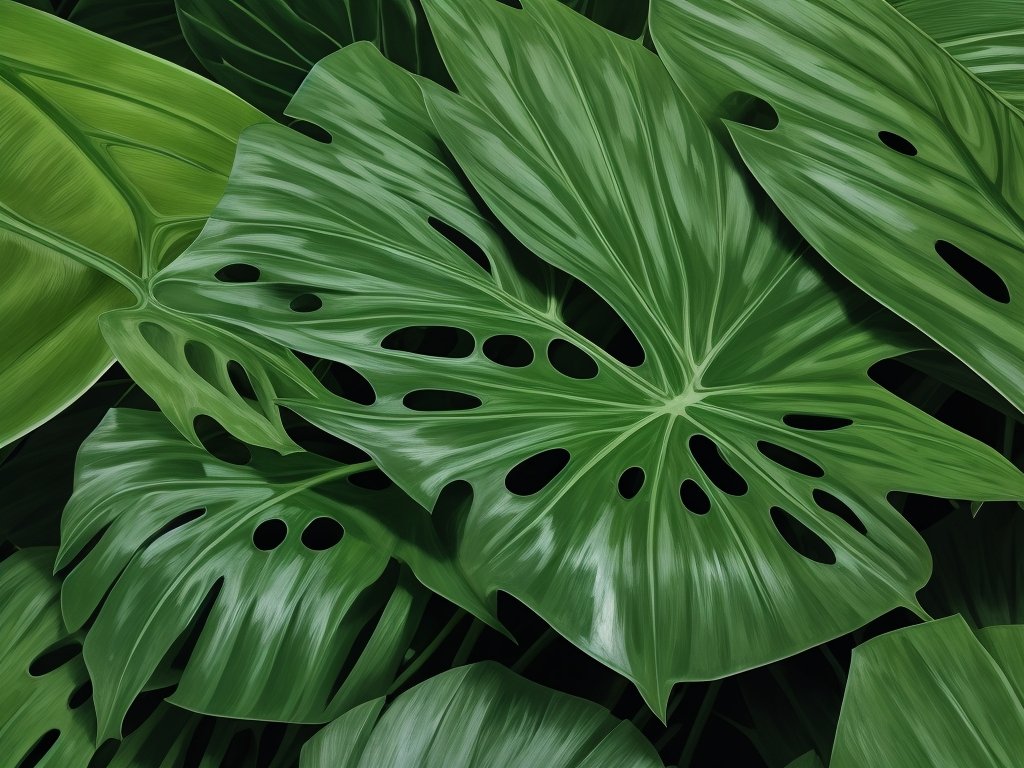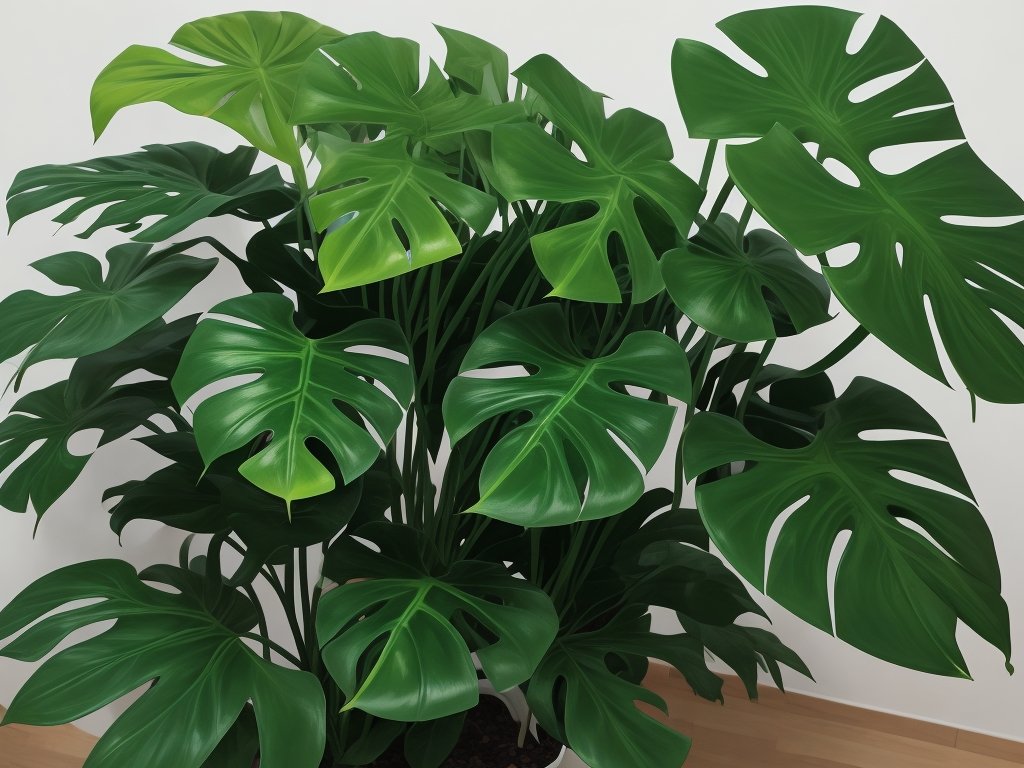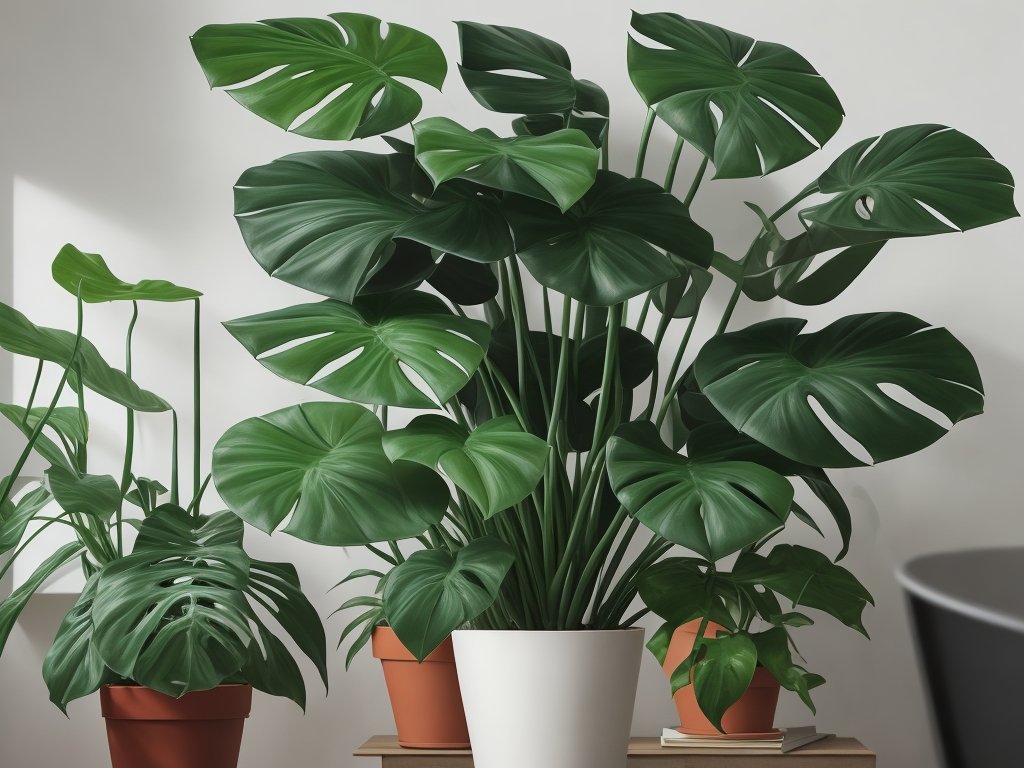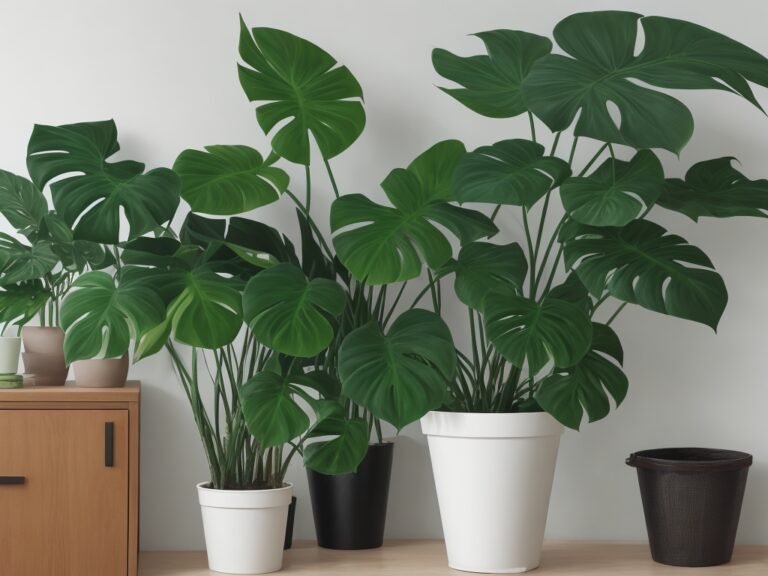Why Are My Monstera Leaves Getting Smaller?
Key Takeaways:
- Lack of proper lighting can cause Monstera leaves to decrease in size.
- Overwatering can lead to smaller Monstera leaves.
- Nutrient deficiencies may result in smaller Monstera leaves.
- Pests or diseases can cause a reduction in the size of Monstera leaves.
Have you noticed that your Monstera leaves are shrinking before your eMonstera leaves can growaph –>
It’s frustrating to see your beloved plant losing its impressive size and beauty.
But don’t worry, you’re not alone in this leafy dilemma.
As a plant lover myself, I understand the frustration and confusion that comes with experiencing smaller Monstera leaves.
In this article, we will explore the common reasons behind this issue and provide practical solutions to restore your Monstera’s leaf size to its former glory.
So, let’s dive in and figure out why your Monstera leaves are getting smaller and how to fix it!
| Possible Causes | Solutions |
| 1. Lack of sunlight | – Move the plant to a brighter spot |
| 2. Overwatering | – Allow the soil to dry out between waterings |
| 3. Nutrient deficiency | – Fertilize the plant with a balanced fertilizer |
| 4. Pests | – Inspect the plant for signs of pests and treat accordingly |
| 5. Root-bound | – Repot the plant into a larger container |
Understanding Monstera Plants
Monstera plants are popular houseplants known for their large, glossy leaves and unique fenestrations.
Understanding their growing conditions is key to their health and growth.
What are Monstera plants?
Monstera plants, also known as Swiss cheese plants, are a type of tropical vine that is native to the rainforests of Central and South America. They are beloved for their large, glossy leaves that have distinct splits and holes in them, resembling Swiss cheese.
These plants are popular as indoor houseplants and can also be found in tropical gardens.

Growing conditions for Monstera plants
Monstera plants thrive in bright, indirect light. They prefer temperatures between 65-85°F (18-29°C) and a humidity level of 50-60%.
Well-draining soil that retains some moisture is ideal.
Watering should be done when the top inch of soil feels dry. Fertilize monthly during the growing season with a balanced fertilizer.
Regular pruning can also help maintain a healthy, bushy plant.

Common Reasons for Smaller Monstera Leaves
There are a few common reasons why your Monstera leaves may be getting smaller: insufficient light, overwatering or underwatering, nutrient deficiencies, pests or diseases, and a root-bound plant.
Insufficient light
Insufficient light is one common reason for smaller Monstera leaves.
Monstera plants thrive in bright, indirect sunlight.
Without enough light, the plant may not be able to photosynthesize properly, leading to smaller leaves.
Providing your Monstera with adequate light exposure will help it grow healthy and produce larger leaves.
Overwatering or underwatering
Overwatering or underwatering can both cause smaller Monstera leaves. Overwatering can lead to root rot, restricting nutrient absorption.
Underwatering can cause dehydration and stunted growth.
Adjust your watering routine by allowing the soil to slightly dry between waterings. Feel the soil to determine when it’s time to water again.
Nutrient deficiencies
Nutrient deficiencies can cause smaller Monstera leaves. Lack of essential nutrients like nitrogen, phosphorus, or potassium can stunt growth.
Ensure you’re using a balanced fertilizer and following the recommended feeding schedule.
Consider using a houseplant fertilizer specifically designed for Monstera plants.
Pests or diseases
Pests or diseases can cause smaller Monstera leaves. Common pests include spider mites, mealybugs, and scale insects.
Diseases like root rot or bacterial infections can also stunt leaf growth.
Treat pests with insecticidal soap or neem oil, and address diseases by adjusting watering practices and providing good air circulation.
Root-bound plant
When a Monstera plant is root-bound, it means that its roots have outgrown its current pot.
This can restrict the plant’s growth and lead to smaller leaves.
To address this, you’ll need to repot the plant into a larger container, providing the roots with more space to spread out and grow.
Be sure to choose a pot with drainage holes and use well-draining soil.
By giving your Monstera enough room to grow, you can help prevent smaller leaves in the future.
How to Address Each Issue
To address each issue, you can consider increasing light exposure, adjusting watering practices, providing proper nutrition, treating pests or diseases, and repotting the plant if necessary.
Increasing light exposure
Increasing light exposure is essential for preventing smaller Monstera leaves. Place your Monstera in a bright spot with indirect sunlight.
Avoid direct sunlight, as it can scorch the leaves.
If natural light is limited, supplement with grow lights to provide the necessary light intensity.

Adjusting watering practices
To adjust watering practices for your Monstera plant, the key is to find a balance.
Avoid overwatering, as it can drown the roots and lead to smaller leaves.
Instead, water your plant when the top inch of soil is dry.
Make sure to provide good drainage and use a well-draining potting mix.
Remember, it’s better to underwater than overwater.
Monitor the moisture level and adjust accordingly.
Providing proper nutrition
To provide proper nutrition to your Monstera plant, you’ll want to use a balanced fertilizer specifically formulated for houseplants.
Look for one with equal amounts of nitrogen, phosphorus, and potassium.
You can feed your plant every 4-6 weeks during the growing season, but remember to dilute the fertilizer as directed on the packaging.
Additionally, it may be beneficial to supplement with micronutrients like iron and magnesium to ensure your Monstera is getting everything it needs to thrive.
Treating pests or diseases
To treat pests or diseases on your Monstera plant, start by identifying the issue.
Common pests include spider mites, mealybugs, and scale insects.
Treat them by wiping the leaves with a damp cloth or using insecticidal soap.
If your plant has a disease like root rot or leaf spot, remove affected areas and adjust watering and humidity levels.
Using fungicides or neem oil can also help.
Regularly inspect your plant and address any issues promptly to prevent further damage.
Repotting the plant
Repotting your Monstera plant can help address smaller leaves. Choose a slightly larger pot with drainage holes.
Gently remove the plant from its current pot, loosen the roots, and place it in the new pot with fresh potting mix.
Water thoroughly and continue caring for your plant as usual.
Preventing Small Monstera Leaves in the Future
To prevent small Monstera leaves in the future, find the ideal lighting conditions and establish a consistent watering routine.
Finding the ideal lighting conditions
To find the ideal lighting conditions for your Monstera plant, place it in bright, indirect light.
Avoid direct sunlight, as it can scorch the leaves.
A balance of light and shade is key.
If the plant isn’t getting enough light, the leaves may become smaller.
Experiment with different locations in your home until you find the perfect spot where your Monstera thrives.
Establishing a watering routine
To establish a watering routine for your Monstera plant, you need to consider a few factors. First, check the soil moisture before watering – stick your finger about an inch into the soil, and if it feels dry, it’s time to water.
Second, water thoroughly until water drains out from the bottom of the pot.
Lastly, allow the top inch of soil to dry out before watering again. This routine will prevent overwatering and promote optimal growth for your Monstera plant.
Fertilizing regularly
Fertilizing regularly is important for maintaining the health and growth of your Monstera plant. It provides essential nutrients that may be lacking in the soil.
Consider using a balanced, water-soluble fertilizer recommended for houseplants.
Follow the instructions on the label for dosage and frequency. Avoid overfertilizing, as this can lead to fertilizer burn.
Monitoring and managing pests
To monitor and manage pests on your Monstera plant, regularly inspect the leaves and stems for any signs of infestation.
Look for insects, such as aphids or spider mites, as well as any visible damage.
Treat pests promptly using organic insecticidal soap or neem oil.
Remember to follow the product instructions and apply treatment as needed.
Additionally, maintaining good plant hygiene, such as removing fallen leaves and avoiding overwatering, can help prevent pest problems.
Repotting as needed
Repot your Monstera plant when you notice it becoming root-bound or outgrowing its current pot. Choose a slightly larger pot with good drainage, and use fresh, well-draining soil.
Gently loosen the roots and place the plant in the new pot, filling in with soil around the roots.
Water thoroughly and continue to care for your plant as usual.

Frequently Asked Questions
Can I prune my Monstera to prevent smaller leaves?
Yes, you can prune your Monstera plant to prevent smaller leaves.
Pruning helps to promote new growth and maintain the overall health and appearance of the plant.
Be sure to use clean, sharp pruning tools and remove any dead or damaged leaves or stems.
Can Monstera leaves get too big?
Yes, Monstera leaves can get quite large.
In fact, their oversized leaves are one of their defining features! As the plant matures, the leaves can grow to be several feet long and wide, creating a striking and dramatic appearance.
So don’t worry, bigger leaves are perfectly normal for Monstera plants.
Is it normal for Monstera leaves to change size?
Yes, it is normal for Monstera leaves to change size as they grow.
Younger leaves tend to be smaller, while older leaves can grow much larger.
This is a natural part of the plant’s growth process.
However, if you notice a sudden decrease in leaf size or other signs of stress, it may indicate an underlying issue that needs to be addressed.
Can Monstera leaves grow back to their original size?
Yes, Monstera leaves can grow back to their original size under the right conditions. By addressing common issues such as insufficient light, improper watering, nutrient deficiencies, pests, or a root-bound plant, you can promote healthy leaf growth.
Providing ideal growing conditions and proper care will help your Monstera leaves regain their original size.
Final Verdict
Understanding the growing conditions and potential issues that can lead to smaller Monstera leaves is key to maintaining the health and vibrancy of your plant.
Insufficient light, over or underwatering, nutrient deficiencies, pests or diseases, and a root-bound plant can all contribute to this problem.
By addressing each issue through increasing light exposure, adjusting watering practices, providing proper nutrition, treating pests or diseases, and repotting as needed, you can help your Monstera regain its full potential.
Additionally, prevention is key, so finding the ideal lighting conditions, establishing a watering routine, fertilizing regularly, monitoring and managing pests, and repotting as needed will help prevent smaller leaves in the future.
Remember, understanding and taking action is the key to a thriving Monstera plant.






